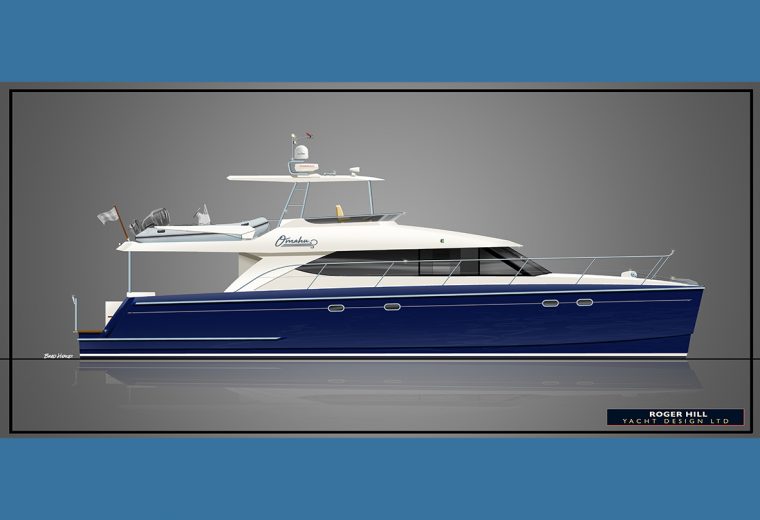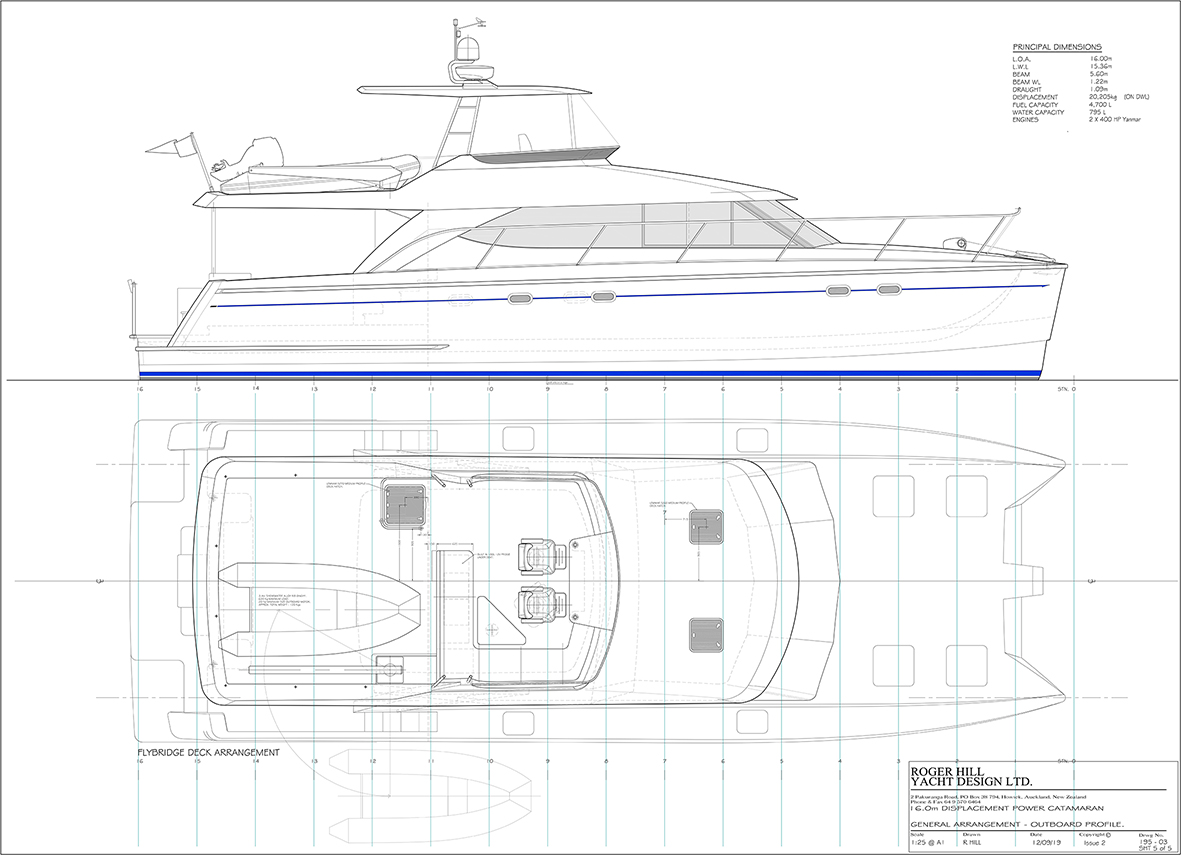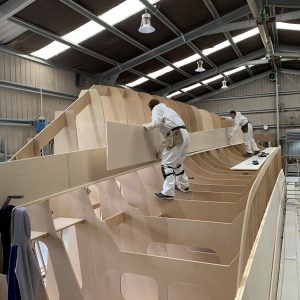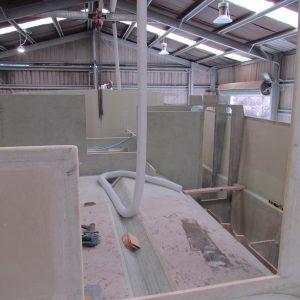Breathing Life Into Boats


ATL Composites provides the precision pieces for the latest Roger Hill-designed powercat.
From concept to completion, building a custom-designed powercat is a breeze with an inspired vision, reliable team, proven materials and just a pinch of magic in the mix.
The product of her owners’ yachting experience and dream of long-range cruising, “Omahu”, a 16-metre composite displacement hull powercat from the pen of legendary designer, Roger Hill, is taking shape at Lifestyle Yachts in Pipiroa, New Zealand.
Meaning “breath”, or “light breeze” in the Maori language, Omahu is a custom-designed vessel that is unique in every aspect.
As Roger Hill explains “The hull shape is a development of our very efficient displacement form, but the styling is unique compared to other similar sized power cats we have done before. It is not a ‘cut and shut’ exercise using an existing similar sized design.”
Omahu is the vision of joint-owners, two Kiwi couples keen to experience long-range cruising around the South Pacific, exploring New Caledonia, Fiji, Tonga and Australia.
One of the owners had previously built a Roger Hill-designed 14.15-metre sailing cat, around 15 years ago, customised to his requirements at that time. The choice of building materials, methodology and designer informed his choice for the current project.
According to Roger, the brief was reasonably straight forward. “There were around 20 specific items”.
“Both owners are very experienced yachtsmen, in power and sailing boats, with ocean-going range as the primary requirement. Both are very practical people, so it wasn’t difficult to convert their thoughts and ideas into the design.”
Emphasis was on comfort, rather than speed, although, powered by twin Yanmar 6LY400 400hp engines, Omahu is calculated to achieve an impressive top speed of 26 knots.
The design needed space for two couples to live aboard along with storage required for long trips to remote destinations where fuel, water and food might not be readily available.
“One of the interesting things that came up right at the start was how big the vessel should be. After some discussion, I suggested that perhaps they should go and find a suitable marina berth to keep it in, and that’s what happened. From that point, we worked out the maximum beam and a maximum length.”
 The design process involved relatively few challenges.
The design process involved relatively few challenges.
“You have probably heard about the ‘design spiral’, the process of starting with a ‘loose’ collection of info and data and compromise through the design journey this becomes tighter and tighter until the final result is signed off.
The result of their collaboration will be a sensational wide-bodied powercat that embodies the “space, pace and grace”, the characteristics of multihulls that inspire such loyalty in their owners.
“This particular design does not have as much beam (5.6-metres) as I might normally have on a displacement power cat of this length, but this was related to the width of the marina berth. The upside of that slightly narrower beam, less transverse stability will be an improved motion; not such a quick roll period in a beam sea.”
With her shallow draft of just over 1-metre, Omahu will be able to explore remote inlets and anchorages where other yachts may not be able to access.
Seeking strength, durability, light-weight and precision, Roger based the design of Omahu on construction using DuFLEX Composite panels from ATL Composites.
“ATL and I go back a long way,” recalls Roger. “The first DuFLEX kit we did was over 18 years ago, and we have done many since then in both power and sail. One of Omahu’s owners had already built a sailing cat using the DuFLEX panel system so he was very happy to build the power cat using the same materials and method of construction.
“Another consideration was the builder, who didn’t have a lot of experience building a full-foam cored catamaran, so he has been very appreciative of the pre-made panels and CNC router set of parts.
“The DuFLEX Building System offers builders a very high-quality panel and very precise accuracy, and for the client, an assurance of structural integrity.”
From a technical standpoint, Omahu is destined to have a dark blue hull which dictated the choice of foam core to be used in the hull and transom areas. A combination of Divinycell HP80 and HP100 foam cores, type approved by DNV-GL Maritime, were chosen for the DuFLEX Strip Planks used in these areas to provide elevated temperature and mechanical performance under the owners’ choice of a dark blue paint.
Engineered to survey standards by ATL Composites Engineering team, other DuFLEX Composite Panels components in Omahu include wing-deck, soles, girders, webs, bulkheads, longitudinal and interiors all supplied in CNC-Routed Kit Form with various core types and densities to suit the design loads in the vessel.
Far from handing over the plans and moving on to the next commission, Roger Hill prefers to work closely with clients and yard as the vessel is brought to life.
“I really enjoy the developing relationship between the client, the builder and myself. It’s tremendous when the builder is on song and going well, the client is seeing his new boat taking shape and I get involved with helping in any way I can to make the process go as smooth as possible.
“Being a designer must be one of the more satisfying things to do on the planet and that probably applies to just about designing anything. But boats, I think are a little bit more special, it is such a complex sum of all of its parts and when done well becomes much more than the sum of its parts.”
More here: news.atlcomposites.com.au/breathing-life-into-boats/
ATL Composites, 12-14 Production Ave, Molendinar, Queensland. Tel: 07 5563 1222.




